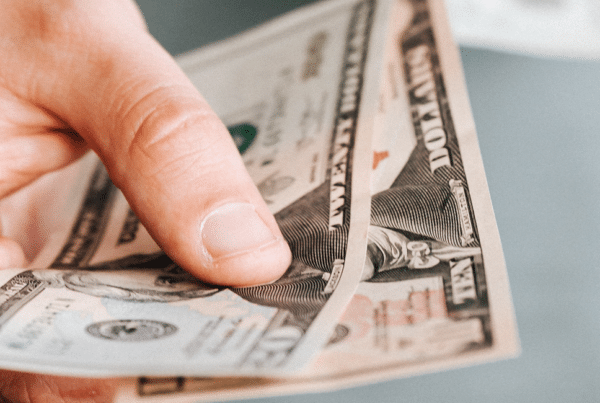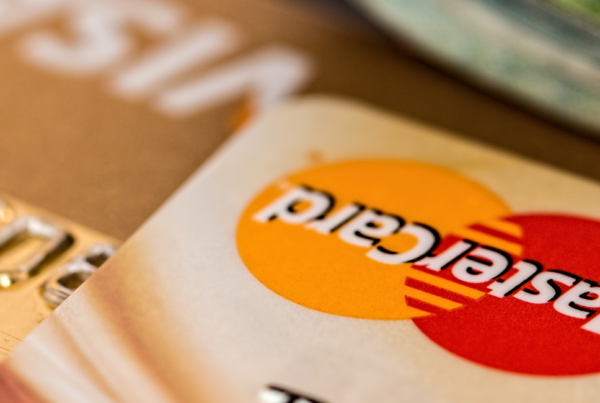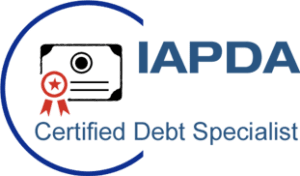
Get out of debt in 2019, is it possible?
Debt can be a serious roadblock to progress, especially in this present economy. As of February 2019, the United States was reported to have accumulated a $22 trillion outstanding debt. While that may be discouraging, there are some simple strategies for paying off debt in 2019 that we’ll cover in this article.
While the financial impact of debt can be more obvious, the emotional and physical effects can often be more disruptive to everyday life. Outstanding debt has been linked to severe stress in individuals, often leading to anxiety, depression and other stress-related ailments.
To get out of debt, you first have to accept and recognize that it is very possible. Not only is it possible, it rarely requires extreme measures such as bankruptcy. It’s easy to see debt recovery as an insurmountable task, mainly because your payments toward that debt have little effect on the overall balance.
Let’s look at a credit card debt of $4,000 with an interest rate of 25%. Making the minimum payment, this credit card will take about 6 years to pay off and you’ll have paid roughly $3,600 in interest during that time. This simple math shows just how hard it is for an average consumer to pay off an unsecured debt.
If your resolution is completely eliminate your debt in 2019, these tips are for you. While there is no silver bullet for debt recovery, there are certainly options. Educating yourself on debt and financial related items makes you a more informed consumer, and debt is no different; the more you know, the better equipped you are to handle it. Below are some general guidelines for understanding, and ultimately paying off your debts this year;
Know your debt-to-income ratio
Your personal debt-to-income ratio is the fraction you obtain when you add up all your debts (monthly) and divide that number by your gross monthly income (your money earned minus taxes and other deductions).
You’ll also need to have (at least a rough estimate) of your net worth. Your net worth is your entire worth (investments, equity, and cash in the bank) in dollars. While this may seem like an arbitrary task, knowing your financial situation and key factors like your debt to income ratio and net-worth will help empower you to make better financial decisions.
Set realistic goals for paying off debt
Now that you know where you are financially, you can begin to plan for the future. It’s highly recommended that you take this process very seriously. Grab a piece of paper and write down your net-worth goals and your debt-elimination goals, specifically when you hope to pay off your debts. Remember to set achievable goals. Setting a goal to be debt free in a month is probably not a good option, unless you have a box of cash lying around. If you did, you probably wouldn’t be reading this.
Often it helps to speak with a debt consultant while setting your debt repayment goals. A reputable debt settlement agency will give you a free consultation, which includes a deep dive into your particular debt and financial situation. These consultants have seen it all and can help you determine the best options for your debt and set achievable goals.
If nothing else, you get free advice from a licensed debt consultant to do with as you please.
Pay attention to your Credit score, and report
Understanding the difference between good debt and bad debt is a key piece to overcoming it. For Americans with credit cards, the average credit card balance is $6,348 excluding big box retailers credit cards, which have an average balance of $1,841. A low credit score is great for obtaining mortgage loans, but don’t forget, we’re getting rid of debt not adding to it!
If your credit score is decent, you can qualify for loans with lesser interest rates, or negotiate with your credit card companies on obtaining lower interest rates. Interest rate definition is the percentage of the money lent that the lender (credit card companies) charges for its use. A higher interest rate means the cost of the debt is higher for you, and the time to repay is longer.
Your credit report can speak volumes about your overall debt status. You can quickly and easily identify your top debtors, and those impacting your credit most. You can also monitor your debt to income ratio, an important factor in your credit profile as we discussed earlier. Here in the states, sites like freecreditreport.com offer consumers a completely free credit report once a year. This is something everyone should be taking advantage of.
After you review your credit report, you’ll have a much better understanding of the specific debts you have, and how they’re affecting your credit. This is going to help you strategize a plan for paying off debt.
Choose which debts to pay off first
You can decide to take the snowball approach by paying off your small loans first. However, a more effective method would be focusing on the big guns initially. There may be options to consolidate your debts or transfer balances, and these steps can help to ease the immediate stress of larger debts.
If you’re already facing collections on some accounts, you can always try to negotiate with the collectors yourself. This is often difficult at the consumer level as we have very little leverage in the fight. It is a debt we owe, and the creditor is rightly expecting us to pay it. This is another reason many people choose to work with a debt settlement company, who often have resources beyond those of consumers to negotiate lower balances. You do end up paying a fee to these companies, but compared to what you’ll save overall on interest alone… it’s a fraction.
Live Frugally and Trim the Fat
You are going to have to reduce your cost of living in order to save up more cash and begin paying off your debt. This is of course much easier said than done. Start looking for ways to reduce your cost of living without drastically changing your way of life. It could mean simple things like quitting smoking, shopping with coupons or even making your own coffee in the morning and packing lunch. Cut off expenses you can simply do without and you’ll be surprised how much is left over.
There are some great apps for monitoring your subscription services and outgoing cash. These small charges add up and if you’re trying to pay down debt, it may be a good time to review them. I personally did this just a few months ago using Mint and found I was paying for four streaming services that I hadn’t used in months. Cancelling these put $50 back into my monthly budget instantly.
In closing, we hope these simple strategies for paying off debt help give you a broader view of your not only your debt, also your overall financial situation. With more and more unsecured debt piling up, consumers need relief. Don’t be afraid to ask for help.
Your partner in debt relief,
Consumer First Financial





